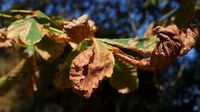As autumn sweeps across the Northern Hemisphere, millions of people find themselves drawn outdoors, eager to witness the annual spectacle of fall foliage. In Japan, this centuries-old tradition is known as momijigari—red-leaf hunting—a practice that has inspired poets and painters since at least the 8th century. Meanwhile, in the United States, the term "leaf-peeping" has entered the modern lexicon, with travelers crisscrossing the country in search of the most vibrant reds, yellows, and oranges. But as climate change tightens its grip, scientists warn that the colors of fall are not what they used to be—and may become even duller in the decades ahead.
Recent research conducted at three climate change-monitoring sites in Japan has revealed a striking trend: between 2011 and 2020, the brightness of autumn leaf color has noticeably faded. According to a study led by plant ecologist Dai Koide at the National Institute for Environmental Studies, and published in Scientific Reports in 2025, this dulling is closely tied to warmer temperatures and earlier leaf opening in spring. "I feel it’s quite sad if the autumn season and its culture is diminished in Japan," Koide told Chemical & Engineering News, reflecting the sense of loss felt by many who cherish the tradition of momijigari.
The science behind this phenomenon is both fascinating and sobering. When autumn arrives, shorter days and dropping temperatures signal trees to begin the process of senescence—essentially preparing for winter by pulling valuable nutrients like nitrogen and phosphorus from their leaves back into their branches and trunks. As chlorophyll, the pigment responsible for green hues, breaks down, other pigments such as carotenoids and xanthophylls reveal the yellows and oranges that have been present all along. The reds, however, come from anthocyanins, flavonoid pigments whose production is influenced by environmental conditions.
Koide's team analyzed a vast database of digital photographs taken hourly at three alpine sites in Japan, using the visible atmospherically resistant index (VARI) to quantify changes in leaf color brightness. Their findings suggest that longer growing seasons, brought on by warmer temperatures, reduce leaf vitality and lower anthocyanin levels, leading to less vibrant autumn displays. The study projects that by the end of this century, autumn forests in Japan could be 15% duller than they were during the period from 1981 to 2000. This prediction aligns with a 2025 report from the Japan Meteorological Agency, which forecasts that annual mean temperatures in Japan could rise by as much as 4.5 °C between 2081 and 2100.
These changes are not unique to Japan. Across the globe, more than 1,000 species of deciduous trees and shrubs undergo autumnal color shifts, and scientists are observing similar trends elsewhere. In Ohio, for example, a 2023 study compared modern data with meticulous records kept by a farmer from 1883 to 1912, revealing that black oak trees now change color 16 days later than they did a century ago. South Korea has reported comparable delays in Asian maple and ginkgo trees, according to a 2025 study. In Europe, a 2020 study published in Science predicted that, by the end of the 21st century, the aging and falling of autumn leaves could advance by three to six days, as earlier springs leave leaves with less time to accumulate nutrients before senescence.
In the United States, the annual autumn transformation is eagerly anticipated, with peak foliage typically beginning in northern states by mid-September and gradually moving southward. According to NPR, leaves in the northern West and Midwest are expected to reach their peak by October 4, while much of New England and the Pacific Northwest will be at or near peak color by October 11. But as Alexandra Kosiba, extension assistant professor of forestry at the University of Vermont, explains, "No one can predict fall foliage—we just have to sort of let it unfold." The timing and intensity of color change depend on a complex interplay of temperature, elevation, rainfall, and even pest activity.
Climate change, however, is making its presence felt. Kosiba notes that fall foliage in the U.S. has been delayed by about a week since the mid-20th century, a shift attributed to global warming. Warmer spring temperatures can trigger trees to begin the process earlier, while warmer fall temperatures can delay the onset of color change. "In general, we are seeing fall foliage is occurring later than it has historically, based on global climate change," Kosiba told NPR. Yet, every year brings its own quirks, shaped by the unique combination of spring, summer, and fall conditions.
For the millions who travel to witness the autumn spectacle, these changes have real economic implications. In New England alone, fall foliage tourism generates about $8 billion annually, according to the National Park Service. Local economies in Japan and elsewhere also depend on the influx of visitors seeking the perfect autumn view. But the dulling and delay of fall colors could threaten these traditions and livelihoods.
Weather extremes add another layer of unpredictability. In 2025, New England is experiencing drought conditions—despite a wet spring and early summer—which has caused some leaves to turn brown and shrivel prematurely. Paradoxically, minor drought can sometimes intensify red hues, but severe drought or heavy rain can cut the foliage season short. The ideal conditions for a long-lasting, vibrant display are warm, sunny days and cool nights, which help prolong peak foliage for seven to ten days. But as Kosiba points out, "If you're in a location … and it's looking a little dull, go a little further afield, go to a different location, and you might find some really good fall foliage developed."
Back in Japan, Koide and his colleagues are pondering ways to protect the cultural and ecological value of autumn forests. One suggestion is to create nature preserves specifically for autumn foliage. Other, more controversial proposals include artificially delaying color change by stockpiling snow in certain areas—though Koide cautions that such interventions may increase human interference with natural cycles. For now, the best advice for leaf-peepers everywhere is patience and flexibility. As Pamela Templer, a biologist at Boston University, observes, the most breathtaking reds appear when trees "are basically marching through senescence at a regular pace and not being accelerated by some external stress—whether it's extreme drought, extreme rain, extreme fungus, extreme anything."
Despite the challenges posed by a warming world, the allure of autumn endures. Whether in the hills of Japan or the forests of Vermont, the changing leaves remain a reminder of nature’s resilience and the fleeting beauty of the season. For those willing to seek it out, there’s always a patch of color waiting somewhere, promising that the spirit of fall is still alive—at least for now.




